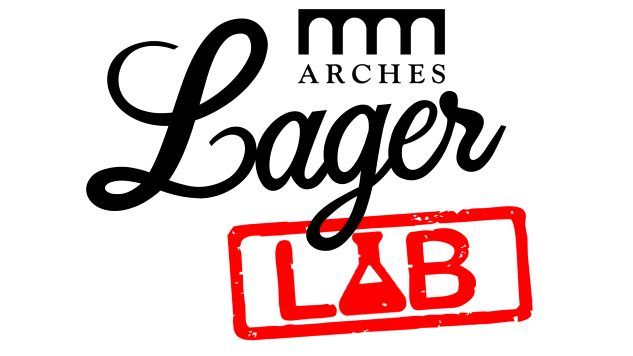How Arches Brewing Made Craft Lagers The Centerpiece of Their Business
Photos via Arches Brewing
We are in the midst of what feels like a significant “moment” in the beer industry for craft lagers. Long viewed by the craft industry with outright derision, while breweries defined themselves by their diametric opposition to “fizzy yellow beer,” it’s been a revival that has developed slowly over the last decade. It wasn’t all that long ago that craft breweries even daring to produce a hop-forward Czech pilsner were seen as something of an oddity. Today, they’re everywhere.
In fact, the most notable craft beer industry trend of late 2017 and early 2018 may in fact be the rise of craft-made “light lagers,” which have been proliferating wildly, seeking some small chunk of the market controlled almost 100% in the U.S. by AB InBev and MillerCoors. It would have been difficult to imagine five years ago that a brewery like Founders would be trying to compete against Anheuser by selling 24-packs of light lager for $17.99, but that’s where we now find ourselves. Even the official MillerCoors blog is writing about the phenomenon, although they make sure to subtly imply that the effort is a futile one.
The bottom line, though, is that lager styles in general have become easier over time to sell to a craft beer audience. Through education at the taproom level, beer drinkers are increasingly coming to appreciate the subtleties of various lager styles, which are all so often marked by slight rather than bombastic deviations from beer to beer. On some level, lagers are doing hard work to reclaim the acuity of the American beer drinker’s palate, while providing an alternative to the latest double dry-hopped IPA.
Still, even though lagers have come a long way, you don’t often see a brewery that has embraced them as widely, and with as much passion, as Atlanta’s Arches Brewing. More specifically located south of the city in Hapeville, Georgia, only minutes from the world’s busiest airport, Arches has been focused intently on the art of the lager ever since they first opened in April of 2016. Seeing a niche in the market that wouldn’t involve competing against every brewery producing popular IPAs and kettle sours, Arches instead chose from the very beginning to make lagers central to their identity, starting with their flagship brew, Unseasonal. Numerous other lager styles have followed, from Vienna lager and bock to dunkel, baltic porter and imperial pilsner. And it’s not as if Arches doesn’t make any ales—it’s just that you can always be sure of finding some lagers on the menu. They even drilled their own well in order to have access to an unchanging supply of water with a mineral profile they can then alter to their needs for every lager.
In 2018, the brewery is taking that program even further with a new series dubbed “Lager Lab.” Designed to be released throughout the year, Lager Lab beers are intended to tackle ever more obscure and subtle lager styles, while educating the customer base and building greater appreciation for the art of a well-made lager. The first Lager Lab beer, Triboulet, is described by the brewery as a lightly hazy India Pale Lager (IPL) that “aims to satisfy both hop lovers and lager enthusiasts alike.” It will make its debut at the brewery’s second anniversary party on April 14, with future Lager Lab releases to follow in the coming months.
Given that we at Paste think this is an objective worth pursuing, we recently sat down with Arches co-founder Ryan Fogelgren and brewmaster Jamey Adams for a conversation on all things bottom-fermented—accompanied, of course, by half a dozen different lager styles.

Paste: Obviously it’s significant that you’re launching Lager Lab as its own series, but you guys have always produced way more lagers than most craft breweries, from the time you first opened. What role were you expecting/hoping them to play for Arches?
Jamey Adams: From the beginning, the idea was to have a seasonal lager series so we would always have some available. Being a drinker, I’m personally a very seasonal drinker, and I was very seasonal as a homebrewer as well. I love to pick what I know I would want to drink three or four months ahead, which is key when you’re making lagers. For me, it was a way for Arches to have lagers all year round, but not start with so many at once because that would be very difficult with the yeast and tank time.
Paste: Which is why there have been so many “quasi-lagers” on the market.
Adams: Right, the pseudo pilsners, or baltic porters that are actually ales. We’ve seen plenty of both. We always wanted to showcase real lagers, but our challenge was finding out how to do that on a small scale. To start, that meant the seasonal lagers, with our flagship “Unseasonal” as the one year-round staple.
-

-

-

-

-

-

-

-

-

-

-

-

-

-

-

-

-

-

-

-

-

-

-

-

-

-

-

-

-

-

-

-

-

-

-

-

-

-

-

-

 Photo by Christian Myers
Photo by Christian Myers






































